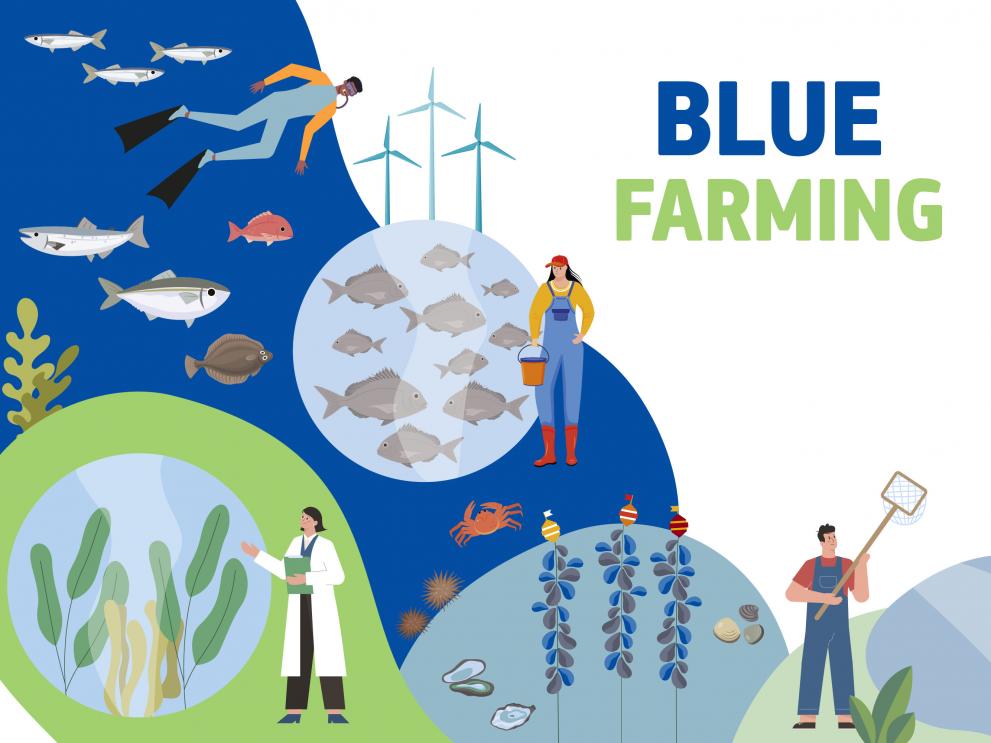Aquaculture, farming aquatic organisms such as fish, shellfish, and seaweeds, has become an increasingly important source of seafood production to meet the growing global demand.
However, like any form of food production, aquaculture comes with its own set of environmental, social, and economic challenges. Sustainable aquaculture emerges as a holistic approach to address these challenges and ensure that seafood production is environmentally responsible, socially beneficial, and economically viable.
Environmental Stewardship for Sustainable aquaculture
One of the primary goals of sustainable aquaculture is to minimize its environmental footprint and ensure the long-term health and productivity of aquatic ecosystems. This involves several key practices:
- Water Quality Management: Maintaining optimal water quality is crucial for the health and growth of farmed species. Proper management practices, such as regular monitoring, efficient filtration systems, and appropriate stocking densities, can help maintain water quality and minimize the risk of pollution.
- Effluent Management: Wastewater from aquaculture operations can contain excess nutrients, organic matter, and other pollutants that can degrade water quality and harm aquatic ecosystems. Implementing effective effluent management strategies, such as sedimentation ponds, constructed wetlands, or recirculating aquaculture systems (RAS), can help treat and reduce the impact of wastewater discharge.
- Resource Efficiency: Sustainable aquaculture emphasizes the efficient use of resources, including feed, water, and energy. Optimizing feed formulations, reducing feed conversion ratios, and implementing energy-efficient technologies can help minimize waste and reduce the environmental footprint of aquaculture operations.
Species Selection and Health
The selection of appropriate species and the maintenance of their health are critical aspects of sustainable aquaculture:
- Biodiversity: Cultivating a diverse range of species can help reduce the risk of disease outbreaks, enhance ecosystem resilience, and provide a more resilient and diversified income for farmers. Integrated multi-trophic aquaculture (IMTA), which involves cultivating multiple species from different trophic levels in the same farming system, exemplifies this approach by utilizing the waste products of one species as inputs for another.
- Disease Management: Disease outbreaks can have devastating impacts on aquaculture production and the surrounding environment. Implementing biosecurity measures, such as quarantine protocols, regular health monitoring, and responsible use of veterinary medicines, can help prevent and control diseases, reducing the reliance on antibiotics and other treatments contributing to antimicrobial resistance.
Social Responsibility
Sustainable aquaculture also emphasizes the importance of social responsibility and the well-being of communities involved in the industry:
- Community Engagement: Engaging with local communities and stakeholders is essential to ensure aquaculture operations respect and benefit local cultures, traditions, and livelihoods. This can involve consultation processes, community development initiatives, and partnerships with local organizations to address shared challenges and opportunities.
- Fair Labor Practices: Ensuring fair labor practices within the aquaculture industry is crucial to protecting the rights and well-being of workers. This includes providing safe working conditions, fair wages, access to training and education, and opportunities for professional development and advancement.
Economic Viability
Economic viability is a fundamental aspect of sustainable aquaculture, as it ensures the long-term success and resilience of the industry:
- Market Access: Developing markets for sustainably produced seafood products and ensuring fair prices for producers is essential to incentivize and reward sustainable practices. This can involve market certification schemes, consumer awareness campaigns, and partnerships with retailers, restaurants, and other stakeholders to promote sustainable seafood consumption.
- Innovation and Technology: Investing in research, innovation, and technology is crucial to improve efficiency, reduce costs, and enhance sustainability in aquaculture production. This can include advancements in feed technology, genetic improvement programs, automation and sensor technologies, and sustainable aquaculture systems design.
Certification and Standards
Certification and standards play a vital role in verifying and promoting sustainable aquaculture practices:
- Third-party Certification: Seeking certification from reputable organizations, such as the Aquaculture Stewardship Council (ASC) or Best Aquaculture Practices (BAP), can help verify that aquaculture operations meet specific sustainability criteria. These certification programs assess various aspects of aquaculture production, including environmental management, social responsibility, and animal welfare, providing consumers with confidence that certified products are produced responsibly.
- Regulatory Compliance: Adhering to local, national, and international regulations and standards related to aquaculture practices, environmental protection, and food safety is essential to ensure legal compliance and protect the integrity of the industry.
Transparency and Traceability
Transparency and traceability are essential to build trust and confidence among consumers and stakeholders:
- Consumer Information: Providing transparent information to consumers about the origin, production methods, and sustainability practices associated with aquaculture products can help inform purchasing decisions and promote sustainable seafood consumption.
- Traceability Systems: Implementing traceability systems to track products throughout the supply chain can help verify their sustainability credentials, prevent fraud and mislabeling, and ensure the integrity and authenticity of aquaculture products.
Conclusion
Sustainable aquaculture represents a comprehensive approach to seafood production that prioritizes environmental stewardship, species health, social responsibility, and economic viability. By adopting and promoting sustainable practices, the aquaculture industry can help ensure the long-term health and productivity of aquatic ecosystems, support resilient and thriving communities, and provide consumers with seafood products that are produced responsibly and ethically. Through collaboration, innovation, and commitment to sustainability, sustainable aquaculture offers a promising path forward for the future of seafood production.
Top of Form
